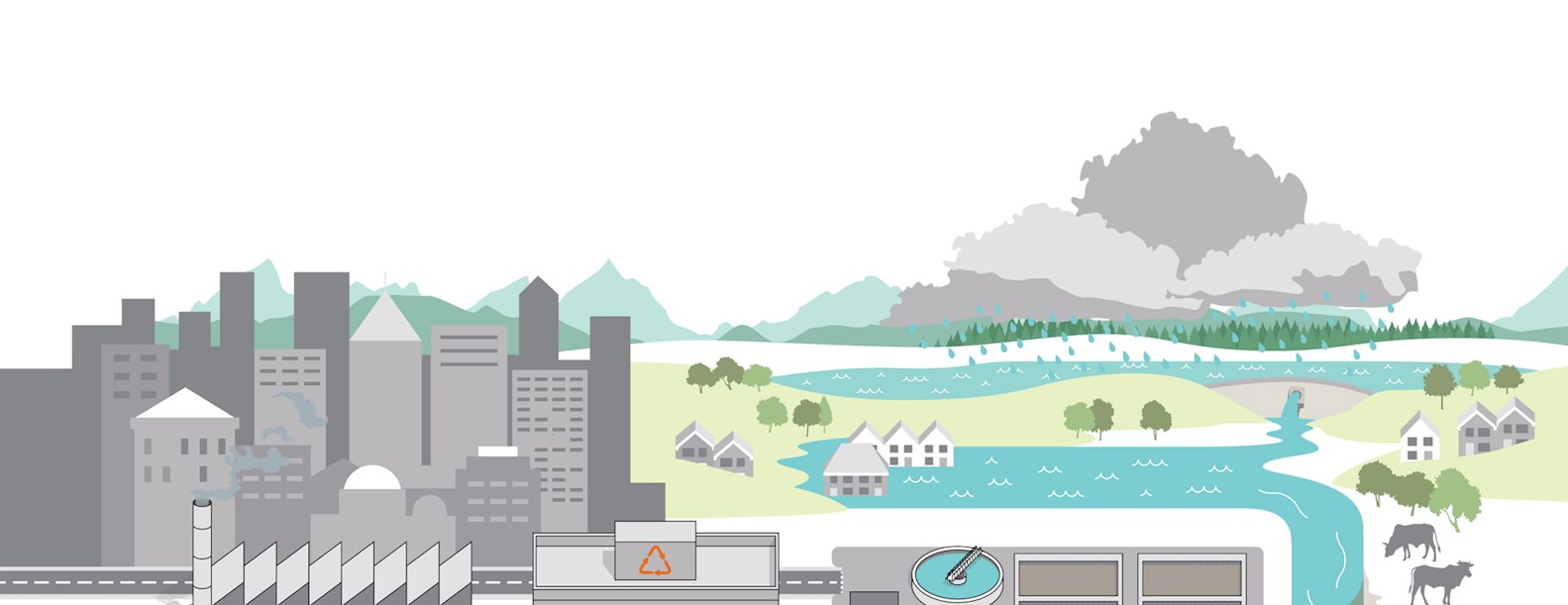Vital new technologies and strategies for saving and recycling water
Ninan Zhao CONTRIBUTOR
Illustration: Jeremy Phillips.
Every day, trillions of litres of free, fresh water drop from the sky onto the world’s cities each year, yet most of it is channeled straight into gutters, drains, and rivers. At best, this represents a waste of a valuable natural resource. At worst, it can lead to devastating urban floods.
As global temperatures rise, climate change will definitely threaten to bring more extreme weather. Yet, across the world, developing nations are getting increasingly urbanized. This means more forests and natural habitats will be cleared to make way for urban development. Since concrete soaks up water very poorly, this will further exacerbate the situation. That is why many scientists and politicians are proposing “sponge cities,” a reimagination of the urban environment where almost every raindrop is captured, controlled, and reused.
Controlling water in urban areas is nothing new. Since Roman times, engineers have constructed aqueducts and underground drainage systems to control the inflow and outflow of water in cities. Since the start of the industrial revolution in Europe, places like Britain and France start to build more elaborate networks of water drainage systems like the Paris sewers featured in novels such as Les Misérables by Victor Hugo. However, one of the disadvantages of those elaborate drainage systems is that they require a lot of time to construct, but many of the cities in developing countries grow too fast for the drainage systems to keep up. That is when new technology has to be used.
One of the main differences between traditional concrete drainage systems and the new concept of a sponge city is that instead of funneling rainwater away through pipes, a sponge city retains it for use within its own boundaries. This is done by increasing the greeneries in the city. For example, many buildings now have rooftop gardens. During the rainy season, the plants and soil in the garden will absorb water rather than let it flow down somewhere else. Environmentalists have calculated that a cluster of buildings installed with rooftop gardens could catch enough rain to replace up to half of all that building’s toilet water. The rooftop gardens would also reduce the tropical air temperature by around 1.3˚C, reducing the energy needed to cool the building.
At ground level, impervious concrete can be replaced by bio-swales, ditches filled with native plants that naturally collect and filter rainwater. That water can then either be allowed to seep into the soil to replenish the groundwater or be collected in underground cisterns. Some might be used to recharge depleted aquifers or irrigate gardens and urban farms. Some could replace the drinking water we use to flush our toilets and clean our homes. It could even be processed to make it clean enough to drink.
A lot of cities around the world now are buying into this idea of a sponge city. For example, in Los Angeles, a disused 50-acre rock quarry is currently being renovated into a park-like facility that will capture storm water, treated to remove pollutants, and then used to recharge the city’s groundwater. The system should eventually be able to store more than a billion litres of water. In Shanghai, the city government has already spent $119 million planting greenery on rooftops, building wetlands for rainwater storage, and constructing permeable roads that store runoff. In early 2016, Shanghai announced the construction of 4.3 million square feet of rooftop gardens throughout the entire city to reduce flooding.
Although the sponge city as a concept is currently under trial in various cities, it indeed provides another thing for urban designers to consider when planning a city. Currently, Toronto does not have any relevant developments in this area. Even though this technology may not be suitable for Toronto, it is still advisable for universities such as the University of Toronto (U of T) to start researching in this area because the future is unpredictable. With the current trend in climate change, extreme weather may happen more frequently in the future. Toronto is a city that is near the lake; no one can be sure that urban flooding will not happen in the future. Given that U of T has such strong engineering and architecture departments, it is advisable to consider this concept as soon as possible.




